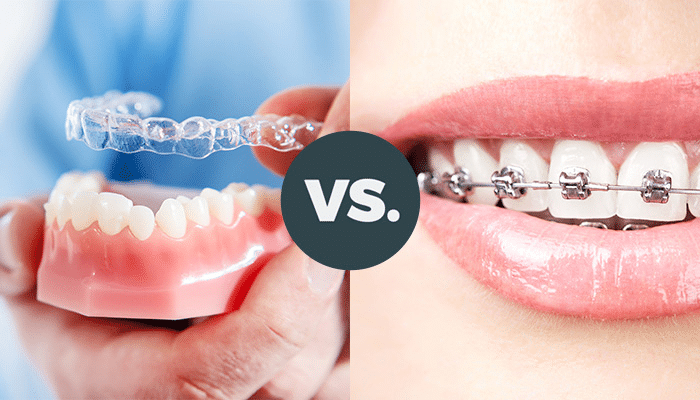Deciding to straighten your teeth is a big step toward improving both your appearance and oral health. With advancements in orthodontic technology, patients now have multiple options to achieve a confident smile. Two of the most popular methods are traditional braces and clear aligners. Each has its own benefits and limitations, and the right choice depends on your specific dental needs, lifestyle, and personal preferences.
Today, many patients find themselves comparing aligners braces to determine which option better suits their goals. While both are effective in treating various orthodontic issues, understanding how they work and what they offer can help you make a more informed decision.
How Braces Work
Braces consist of metal or ceramic brackets that are bonded to your teeth and connected by wires and elastics. These components work together to apply continuous pressure, gradually moving your teeth into the desired position. Braces are effective in treating a wide range of dental issues, including severe misalignment, crowding, and bite problems.
Because braces are fixed to the teeth, they are always working—24 hours a day. This makes them ideal for more complex orthodontic cases, particularly in teenagers or patients who may not remember to wear removable appliances.
How Aligners Work
Clear aligners are custom-made plastic trays that fit snugly over your teeth. They are designed to be worn for 20 to 22 hours a day and are replaced every one to two weeks with a new set, each slightly adjusted to move your teeth gradually.
Aligners are best suited for patients with mild to moderate alignment issues. They are popular among adults and teens who prefer a more discreet and flexible treatment option. Unlike braces, aligners can be removed when eating, drinking, brushing, or attending special occasions, making them convenient for everyday life.
Aesthetic Considerations
One of the most obvious differences between braces and aligners is appearance. Braces are visible when you smile, though ceramic versions are less noticeable than traditional metal ones. On the other hand, clear aligners are virtually invisible, which makes them a preferred choice for individuals who are self-conscious about wearing orthodontic appliances.
If maintaining a natural-looking smile during treatment is a high priority, aligners may offer a more aesthetically pleasing solution.
Comfort and Convenience
Braces, especially when first applied or adjusted, can cause discomfort due to pressure and metal components rubbing against the inside of the mouth. Wax can help reduce irritation, but some discomfort is expected.
Aligners are generally more comfortable because they’re made from smooth plastic and lack wires or brackets. However, they can still cause temporary soreness, especially when switching to a new set.
Aligners offer more freedom since they are removable. This allows you to eat without restrictions and maintain better oral hygiene by brushing and flossing as you normally would. Braces, on the other hand, come with a list of foods to avoid—such as sticky, hard, or chewy items—that could damage the hardware.
Oral Hygiene and Maintenance
Keeping your teeth clean is more challenging with braces. Food can easily get trapped around brackets and wires, increasing the risk of plaque buildup and cavities. Special tools like interdental brushes and water flossers are often recommended.
Aligners allow you to maintain your regular oral hygiene routine with minimal changes. Since they’re removed for brushing and flossing, there’s no obstruction to cleaning your teeth thoroughly.
Treatment Duration and Effectiveness
Treatment time varies based on the complexity of your case. Braces typically require 18 months to 3 years of treatment, depending on the severity of the misalignment. Aligners may have a shorter treatment time—usually between 6 to 18 months—if the case is mild.
While both options are effective, braces are often more versatile in handling complex orthodontic problems. Aligners are best suited for less severe cases involving spacing, mild crowding, or minor bite issues.
Cost Considerations
The cost of treatment can vary significantly depending on location, provider, and treatment duration. In general, traditional metal braces are often less expensive than aligners. However, prices can be comparable, especially with more advanced or longer-lasting aligner treatment plans.
It’s important to weigh the value of convenience, appearance, and comfort alongside cost when making your decision.
Final Thoughts
When comparing aligners braces, there is no one-size-fits-all solution. The right option for your smile will depend on your specific orthodontic needs, budget, and lifestyle preferences. Consulting with a qualified orthodontist is essential to evaluate your case and receive personalized recommendations.
Both aligners and braces have proven track records in helping patients achieve straight, healthy smiles. By understanding the differences, you’ll be better prepared to choose the solution that brings you the best results—and the smile you deserve.

